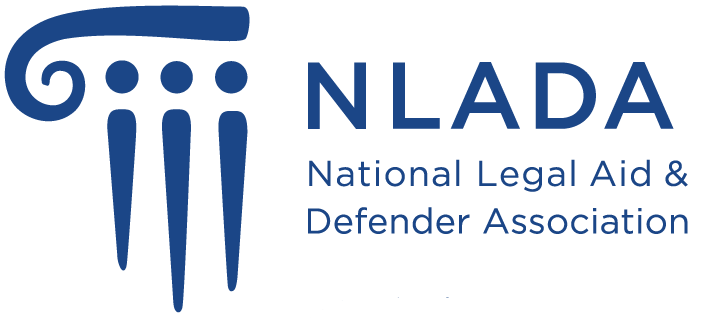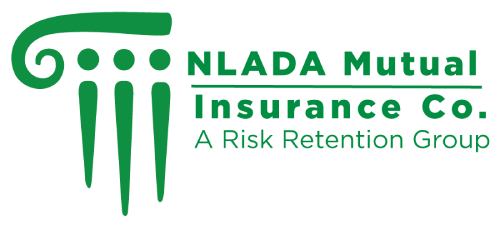Table of Contents Commentary Printed Standards
1. Defender Training Structure & Funding
Standard 1.1 - Training is Essential
The defender organization must provide training opportunities that insure the delivery of zealous and quality representation to clients.
Standard 1.2 - Written Training Plan
Every defender organization must have a clear, written plan, which includes specific goals and objectives, for offering training opportunities to all employees.
Standards 1.3 - Adequate Financial Resources
Defender organizations must have adequate governmental funding for the resources to provide high quality training opportunities consistent with these standards.
Standard 1.4 - Training Director and Staff
The leadership of the organization must ensure that the training efforts are administered and overseen by a person or persons who have training as a specific job duty, and whose other work duties are adjusted to ensure that the training responsibilities can be competently directed. That such person(s) should be provided with resources and staff to accomplish these responsibilities.
Standard 1.5 - Organizational Position of Training Director
The organization’s leadership team should demonstrate a firm and consistent commitment to training as an integral part of the office’s practice. The person who is responsible for training should be a member of the organization’s leadership team or have a meaningful voice in its decisions with regard to the organization’s practices.
Standard 1.6 - Director and Staff Qualifications
All employees who have training responsibilities should have abilities, experience and attitudes commensurate with their training responsibilities and assignments.
2. Defender Training Needs Assessment
Standard 2.1 - Regular Needs Assessments
Every defender organization should, on a regular basis, identify and analyze its organizational and employee training needs to ensure that training efforts are responsive to those needs.
Standard 2.2 - Training Needs Assessment for Organization and for Employees
Training needs assessments for the defender organization should be the responsibility of the training director. The supervision and evaluation of employees should include an annual training needs assessment for each employee.
3. Learning Objectives and Curriculum
Standard 3.1 - Organizational Curriculum
The defender organization should have an organizational curriculum on how to provide zealous and quality representation to clients, which includes appropriate learning objectives for all its employees from entry level staff through the most experienced staff. Based upon the needs assessment findings, the defender organization should create a comprehensive curriculum with clear learning objectives for each of its training and development efforts.
Standard 3.2 - Ethics and Professional Responsibility
The defender organization should offer training and develop materials on ethics and professional responsibility, and should include discussion of ethics and professional responsibility issues as they relate to intended learning objectives in training all employees.
4. Learning Experience and Educational Methods
Standard 4.1 - Selection of Methods
The intended learning objectives in training efforts should determine the selection of instructional methods and strategies, the choice of accompanying program materials, the use of any technological aids which may be appropriate, and the length and location of the training.
Standard 4.2 - Training Staff and Qualifications
Defender organizations’ trainers should be qualified by education, intellect, experience, teaching ability, and temperament to provide instruction which promotes the achievement of intended learning objectives. The defender organization should encourage employees to serve as trainers and should provide them with appropriate training.
Standard 4.3 - Materials and Learning Technologies
Defender organizations’ trainers should use current learning technologies and media devices to augment the learning experience and promote the achievement of intended learning objectives. The defender organization should distribute instructional and comprehensive reference materials which promote the achievement of intended learning objectives.
Standard 4.4 - Learning as an Ongoing Process
Defender organizations should encourage all employees to continue the learning process outside formal programs offered by the organization.
Standard 4.5 - Ongoing Publications and Distribution of Training Materials
Defender organizations should develop and regularly publish independent training materials. These should include both permanent resources and continuing education on developments in the law. If resources are available, the defender organization should obtain and/or produce and distribute audio tapes, videotapes, and computer assisted instruction for its employees.
Standard 4.6 - Maintenance of Training Resources
Defender organizations should maintain an accessible library of training materials developed by defenders within the organization as well as seek to collect training materials from outside resources which would be of benefit to its employees.
5. Learning Environment
Standard 5.1 - Physical Setting
The physical environment and location for training should be conducive to learning and consistent with achieving intended learning objectives. Defender organizations should have adequate and well-trained staff at the training site to assist the training director with logistics and to facilitate the presentation of training activities.
Standard 5.2 - Joint Training
Defender organizations should, when appropriate, pursue joint training opportunities with other members of the criminal justice system, the legal profession, and the community at large.
Standard 5.3 - Limitations on Use of Defender Resources
Consistent with the duty owed to clients, the adversarial nature of the criminal justice system, and the promotion of full learning, some defender training programs and materials should not be available to non-defenders.
6. Evaluation of Learning; Accreditation
Standard 6.1 - Systematic Evaluation of Programs and Materials
Defender organizations should conduct systematic and continuous evaluations of the effectiveness of its programs and materials to assess content, the achievement of intended learning objectives, program design, methods of instruction, quality of presenters, and impact on the participants’ future performance. These regular internal evaluations to training activities should be conducted by the training director for purposes of planning and improving training activities. In addition, the defender organization should seek an independent evaluation of the office’s training efforts and the strategic training plan by a person experienced in training.
Standard 6.2 - Defender CLE Accreditation
Defender organizations should strive to satisfy the continuing legal education requirements of its staff. Where appropriate, the defender organization should seek accreditation by the jurisdiction’s continuing legal education authority as a continuing legal education provider.
7. Death Penalty Defense and Other Complex and Specialized Practice Areas
Standard 7.1 - Death Penalty Defense
Defender organizations should provide employees responsible for the representation of death penalty clients with all training necessary for high quality service to the client at every stage of the process: pretrial, trial, penalty phase, appeal and post-conviction.
Standard 7.2 - Complex and Specialized Practice Areas
Defender organizations should provide special training to employees responsible for the representation of clients with complex or especially difficult cases, as well as for those employees handling specialized areas of practice.
8. Organizational Development
Standard 8.1 - Management and Leadership Skills
The defender organization should provide all supervisors and leaders with training in management, supervisory and training skills, as well as in leadership principles.
9. Quality Assurance
Standard 9.1 - Quality Assurance
Defender organizations should develop and implement methods to insure zealous and quality representation for clients.

